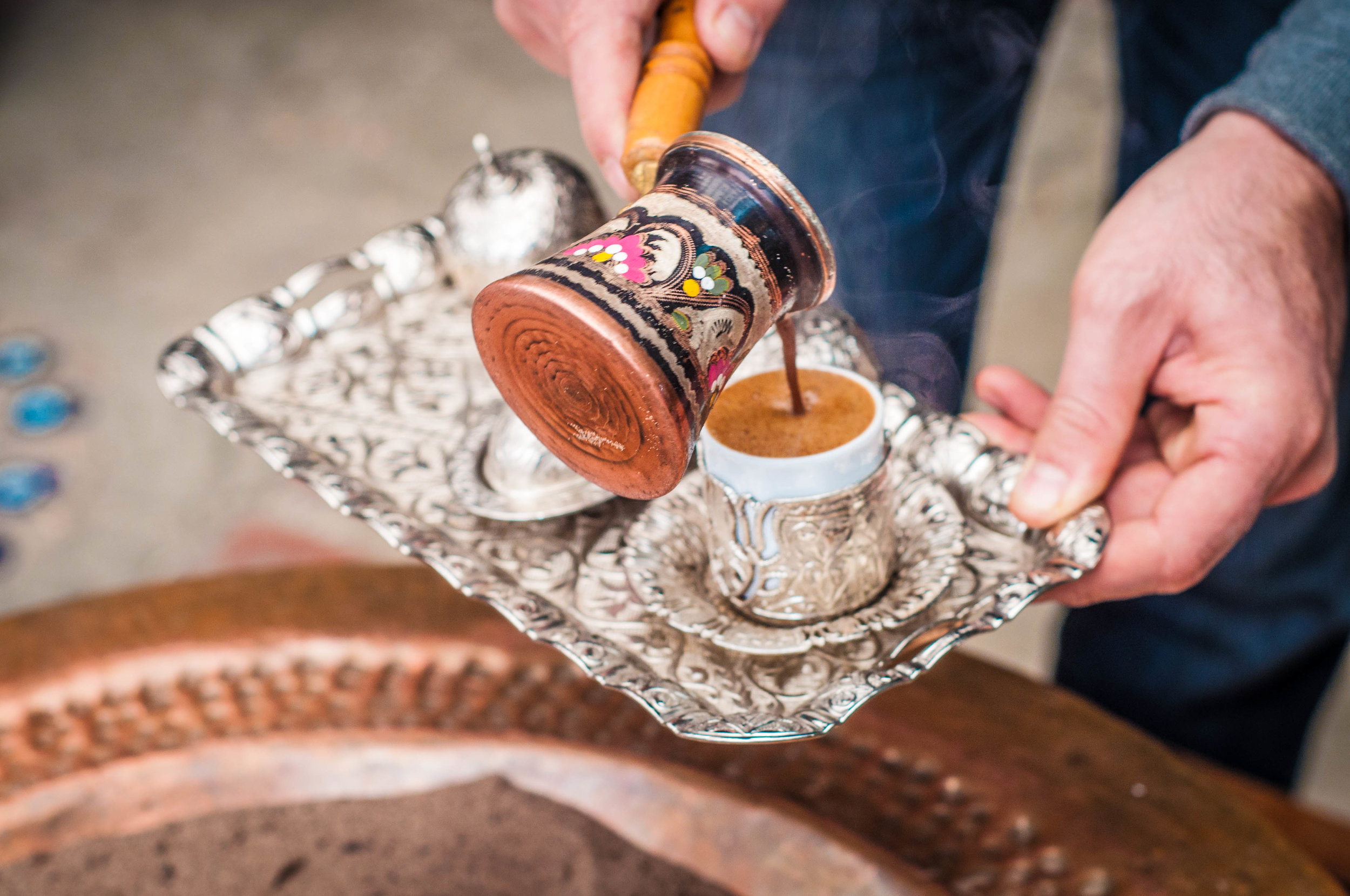This article was first published in NOURISHED Magazine, Issue 7. It is reprinted here with permission
In New York, it is not hard to find a place that serves Turkish coffee, a rich, fragrant almost syrupy pull distinct for the settling grinds at the bottom of the cup and the unique cooking vessel in which it is brewed. However, nowhere do you find the process or the culture associated with this unique brew - one of communality and warmth.
Over the last few years, coffee has developed in to a cult symbolism. Coffee drinkers fall in groups of the Functional, those who frequent any source of caffeine potentially without regard for flavor, the Discerning, those who are particular about the beans as much as the brew, and, the Passionate, those who are intimately knowledgeable of the coffee supply chain, roasting process and brew methods!
While there may be much defensiveness and posturing experienced along this spectrum, one attribute that cuts across all the personalities is of coffee as an individual pursuit. Yes indeed, the drinking of the beverage often happens in a group situation but the coffee unlike food rarely inspires collaboration beyond the consumption. Where one may gather around in the kitchen and share in the cooking process anywhere from the prep to plating or sit by the bar watching the mixologist creating colorful magic or even watch the steeping of tea leaves with avid interest in a communal tea pot, there are rare instances of such shared experiences and togetherness with coffee.
On a visit to Turkey in 2014, I had the pleasure of enjoying the traditional way in which it is brewed, even today. No matter the medium of heat, the the process is neither solitary nor hastened, yet is very simplistic with most basic of cooking tools. Coal or heated sand is used to cook the coffee with water and the only tool used is the distinctly shaped vessel with the long handle.
But, beyond the technicalities, it is the ritualization of the process that struck a chord in me. The making of a traditional coffee is a communal process. It is neither an individual brewing experience nor one done in bulk. But, rather it is a many to many process. Coffee is cooked in individual vessels but as many vessels as people gathered are placed on the medium of heat.
Just like a slow cooked stew, the coffee is constantly stirred and fussed upon while every one participates in the social activity of taking a coffee break. It is no more a simple sipping of the brew but a immersive and collaborative experience of the entire process. Finally, the brew is always served with a side of clear water and Turkish Delight; a balance of sweet and rich, bitter washed down with water as a cleanse.
Performed as such a ritual, the experience of coffee represents many things from friendship to welcome to gratitude to warmth. It is at the heart of it, a signal to slow down your day, indulge in the moment and re-connect with your friends in a much more deeper and engaging way.
In Selcuk, in Southern Turkey, you will be treated to the experience of a Turkish coffee cooked in sand bath. A large copper plate filled with sand and heated from the bottom is the heat source. The sand is always warm and heated when coffee needs to be prepared.
A coffee vessel, one for each drinker, is placed in the hot sand, a generous measure of ground coffee and a measure of water is added and two mixed together. The vessel is heated by building a wall of hot sand around it. In a way, the coffee bakes in the water, infusing it with it flavor and the sand builds up the momentum.
The contents are constantly whisked and teased to boiling point as the sand around the vessel creates a hot bath for it. Once the water boils and rises to the top of the vessel, it is removed from the sand and poured into a traditional coffee cup. Turkish coffee sets are a jeweled art in of themselves. A tray for each person, carries a coffee cup resting in a silver filigree holder, another for the water and a small plate for the Delight.






